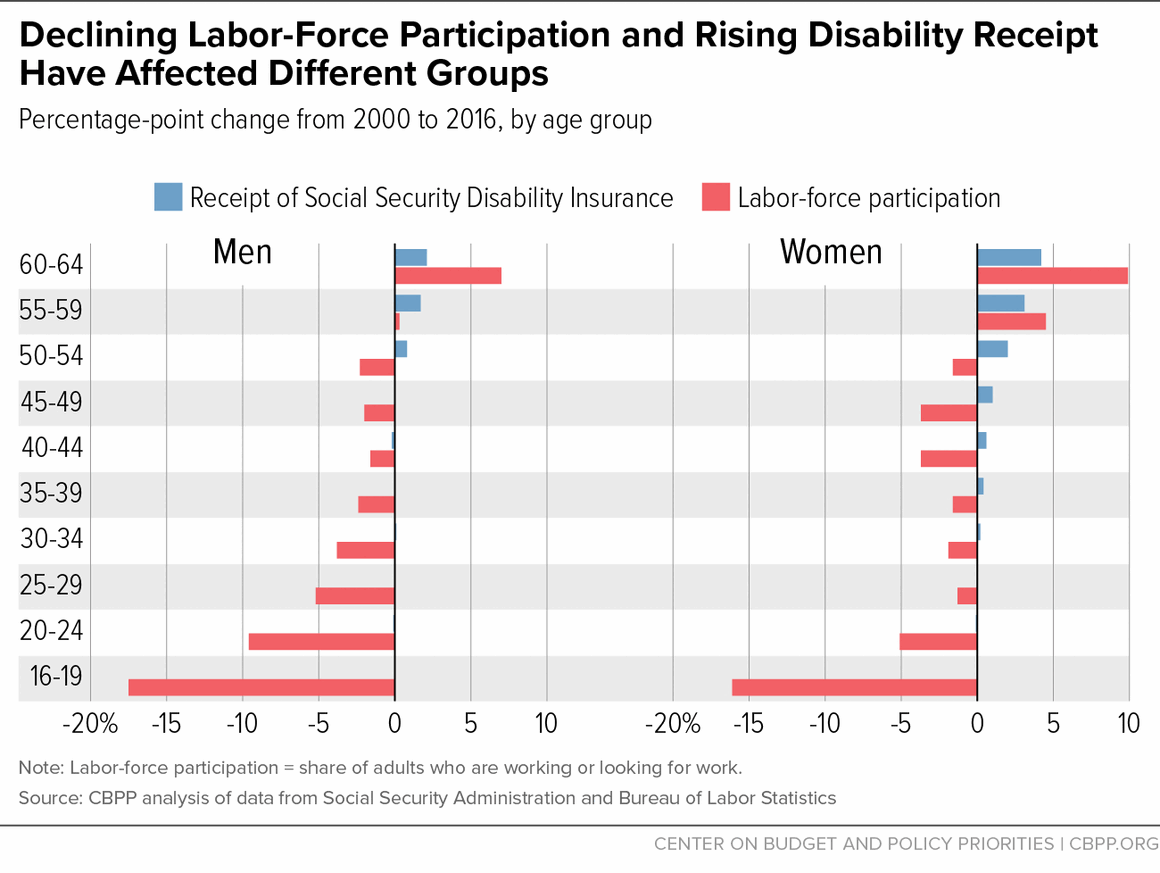BEYOND THE NUMBERS
Labor-force participation — the share of adults 16 and older who are working or looking for work — peaked at just over 67 percent in 1996-2000 and has fallen since then. Some analysts observe that the number of Social Security Disability Insurance (SSDI) beneficiaries grew steeply after 2000, and assume the two trends are related. But evidence for that connection is weak. Here’s why:
- Most of the growth in SSDI stemmed from demographic causes. We estimate that 70 percent of SSDI’s enrollment growth since 2000 reflects four big demographic factors: population growth, aging of the baby boom, growth in women’s labor force participation, and the rise in Social Security’s full retirement age from 65 to 66. The Great Recession, although sometimes blamed for rising SSDI enrollment, actually hurt the SSDI trust fund more by reducing the program’s tax revenue than by swelling its benefit payments.
- Rising SSDI receipt and falling labor-force participation aren’t affecting the same age groups. SSDI receipt has grown modestly among older people, especially older women (see graph) — but so has their labor-force participation, as older workers postpone retirement. The drop in labor-market activity is concentrated at younger ages, particularly men, where SSDI receipt has not risen.
- There’s no reason to think that SSDI beneficiaries would otherwise be in the work force. SSDI allows and encourages work, but few beneficiaries take advantage. That’s no surprise: SSDI recipients are mostly 50 or older, have suffered a severe medical impairment after a lifetime of work, experience high death rates, and typically have limited education. Even rejected applicants struggle in the labor market, and so do former SSDI recipients whose benefits have stopped.
In short, there’s little support for the claim that growth in disability programs has caused the decline in labor-force participation.
Our analysis focuses on the period since 2000, when overall labor-force participation peaked. But the Council of Economic Advisers agrees that disability benefits explain little of the decline in labor-force participation among prime working-age (25-54) males over a longer, 50-year sweep.
Work is good for employees and their families, good for the economy, and good for the government’s finances. With our aging population, we probably won’t get back to the peak labor-force participation rates of the late 1990s, but public policy improvements could help — in areas such as education, training, and jobs programs; tax credits for low-paid workers; and child care and other family-friendly arrangements. We shouldn’t blame SSDI for the decline in this important economic measure.

